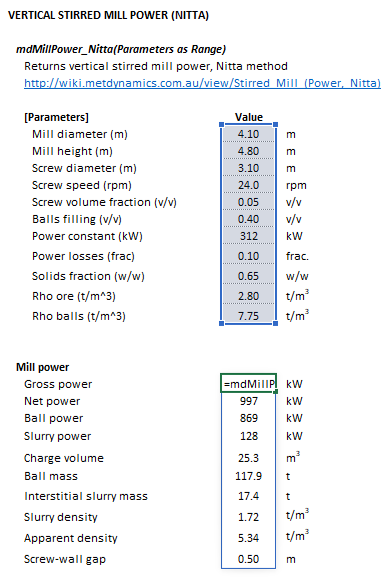Stirred Mill (Power, Nitta)
Jump to navigation
Jump to search
Description
This article describes the Nitta method for estimating the power draw of a vertical stirred mill.[1]
Model theory
Additional notes
Excel
The Nitta mill power model may be invoked from the Excel formula bar with the following function call:
=mdMillPower_Nitta(Parameters as Range)
Invoking the function with no arguments will print Help text associated with the model, including a link to this page.
The Parameters array and model results are defined below in matrix notation, along with an example image showing the selection of the same arrays in the Excel interface:
|
|
SysCAD
The Nitta power model is an optional calculation for stirred mill units. If selected, the input and display parameters below are shown.
See also
References
- ↑ Nitta, S., Furuyama, T., Bissombolo, A. and Mori, S., 2006, September. Estimation of the motor power of the tower mill through dimensional analysis. In Proceedings of 23rd International Mineral Processing Congress (pp. 3-8).





